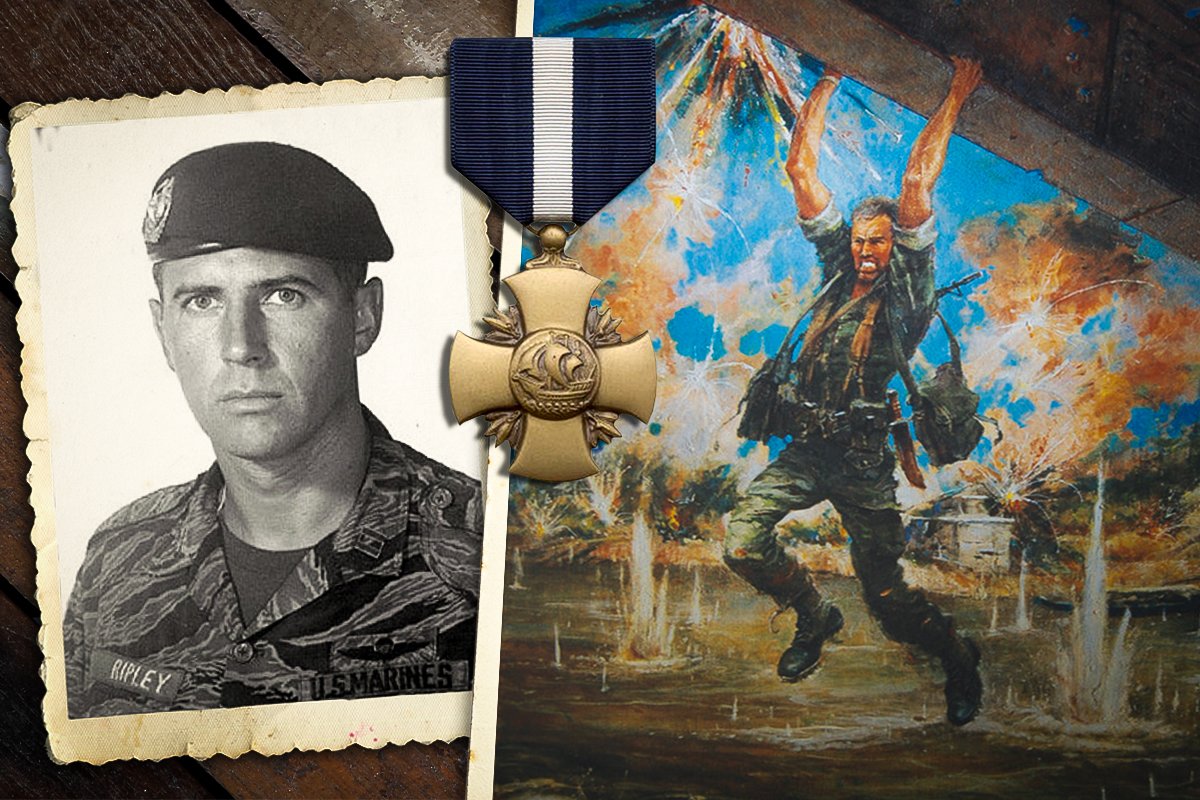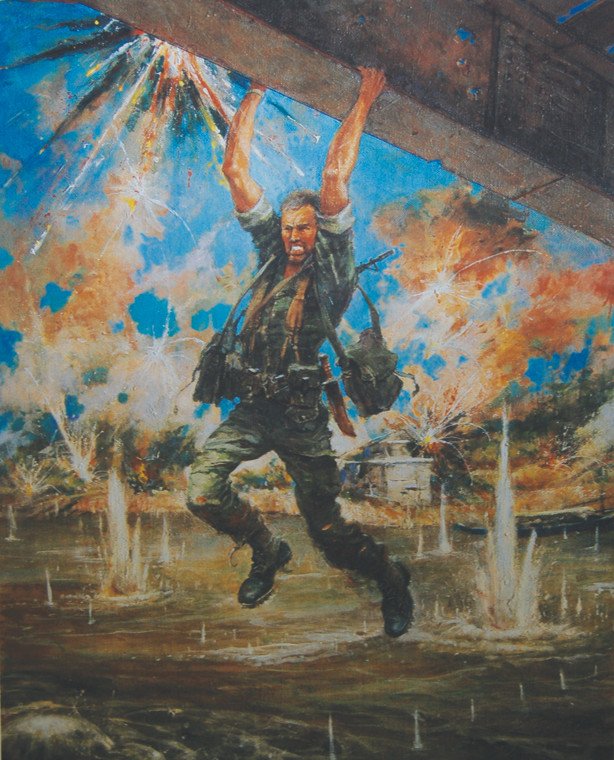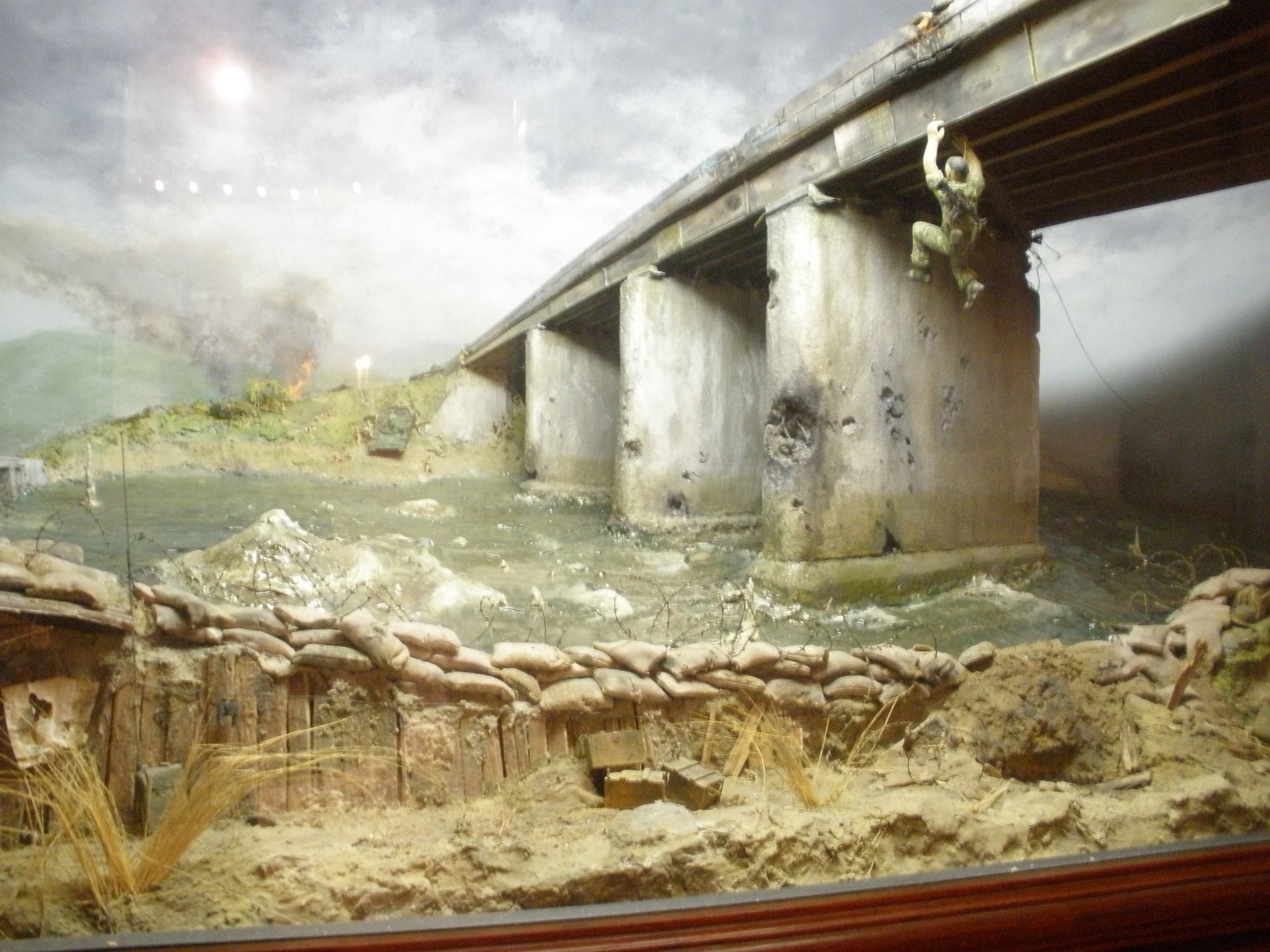
John Ripley planted explosives on a bridge while under fire to stop a Vietnam offensive.
On Easter Sunday, April 2, 1972, Capt. John Ripley surveyed the Dong Ha bridge over the Cua Viet River in South Vietnam’s Quang Tri province. The 32-year-old former enlisted Marine was on his second tour. He had survived a previous engagement five years earlier when his Ripley’s Raiders repelled a North Vietnamese Army (NVA) assault while outnumbered nearly 8-to-1. But this mission was unlike any he had ever encountered before.
Ripley was the senior adviser in charge of more than 700 troops, most of whom were South Vietnamese Marines from the 3rd Vietnamese Marine Battalion. Headed their way were some 20,000 NVA soldiers and about 200 tanks, part of the so-called “Easter Offensive,” North Vietnam’s largest conventional operation of the war. The NVA had overrun all American firebases along the demilitarized zone between the border of North and South Vietnam. The only way to stop this enormous force from sweeping through Quang Tri City was for Ripley’s unit to destroy the Dong Ha bridge.
When Ripley requested orders from a higher command, the order came back: “Hold and die.”

Ripley had positioned his troops along the south bank of the river. He ordered their tanks to fire at NVA armor within range and called for “danger close” naval artillery. To reach the bottom of the bridge, he jumped on a tank driven by Army Maj. James Smock, another American adviser. Once there, he saw that the explosives South Vietnamese engineers had placed earlier were not properly set.
“I put a satchel charge over each shoulder and reached up and grabbed the beam as it approached the south bank,” Ripley, then a colonel, told The American Society for the Defense of Tradition, Family and Property in 2008. “Then I began kicking my way through the anti-sapper fence.”
Smock assisted Ripley as best he could, but the high, chain-link “anti-sapper” fence that protected the bridge’s undercarriage was topped with steel-tipped razor wire. As Ripley carefully climbed over, the razor wire sliced open his legs and backside. His blood soaked his uniform, which he’d worn through three days and nights of nonstop fighting. Though completely exhausted and fatigued, Ripley began hand-walking out over the river, white-knuckled, his fingertips on the girder edges.
As his arms tired, Ripley repeated a rhythmic prayer over and over: “Jesus, Mary, get me there.”
The Marine dangled while completely exposed to the NVA. For more than three hours, Ripley repeated the process: He’d swing his body, hook his heels into the I-beam, muscle himself up inside each of the channels formed between two adjacent I-beams, push the explosives while on his hands and knees, then finally place and prime the charges. He went back and forth five times while the enemy fired “.30-caliber messages” at him. He even faced a flat-trajectory shot from an NVA T-54 tank.
“We had disabled the tank turret so it couldn’t turn, but the driver was able to turn the tank itself and they started shooting at me,” Ripley said during the US Army Ranger Hall of Fame ceremony in 2008. “One round hit the bridge, but was at such a severe angle that it ricocheted off the bridge and exploded on the bank. And, boy, when that 100MM round went off with me in the steel of the bridge, what a racket.”
When all 500 pounds of explosives were placed along the 600-foot steel structure, Ripley attached the blasting caps. “He had to bite down on the blasting caps to attach them to the fuses,” said retired Marine Col. John Grider Miller, author of The Bridge at Dong Ha, according to The New York Times. “If he bit too low on the blasting cap, it could come loose; if he bit too high, it could blow his head apart.”

Ripley and Smock scrambled away from the bridge, and the explosives detonated moments later. The shock wave lifted Ripley off his feet and into the air. “And I’m lying on my back looking skyward, and I can see enormous chunks of this bridge blowing through the air,” Ripley said in 2008. “The idea that I would even finish the job before the enemy got me was ludicrous.”
Ripley was awarded the Navy Cross, the highest medal for heroism behind the Medal of Honor. The destruction of the Dong Ha bridge stalled the advance of NVA troops in the Easter Offensive.
Ripley emerged a living legend in Marine Corps lore, and his legacy continues from within the walls of Memorial Hall at the US Naval Academy where a large diorama, “Ripley at the Bridge,” memorializes his heroism. He retired in 1992 after 35 years of service and two combat tours to Vietnam. In June 2008, a few months before his death, Ripley became the first US Marine inducted into the US Army Ranger Hall of Fame, having attended Army Ranger School in 1965. Ripley credited the demolitions training at Ranger School as a key part of his success on the Dong Ha bridge.
Though the bridge fell and blunted the NVA’s offensive, Ripley insisted that his personal heroism that day should always be a reason to remember the men he fought with.
“When we finally got out of there and returned to Hue City, we had 52 [Vietnamese] Marines out of 735 with us, all of those men who protected me were lost,” he recalled at the Ranger ceremony. “Did they get recognition? No. It’s something that straightens your backbone forever. You just cannot lose sight of that.”
Read Next:

Matt Fratus is a history staff writer for Coffee or Die. He prides himself on uncovering the most fascinating tales of history by sharing them through any means of engaging storytelling. He writes for his micro-blog @LateNightHistory on Instagram, where he shares the story behind the image. He is also the host of the Late Night History podcast. When not writing about history, Matt enjoys volunteering for One More Wave and rooting for Boston sports teams.
BRCC and Bad Moon Print Press team up for an exclusive, limited-edition T-shirt design!
BRCC partners with Team Room Design for an exclusive T-shirt release!
Thirty Seconds Out has partnered with BRCC for an exclusive shirt design invoking the God of Winter.
Lucas O'Hara of Grizzly Forge has teamed up with BRCC for a badass, exclusive Shirt Club T-shirt design featuring his most popular knife and tiomahawk.
Coffee or Die sits down with one of the graphic designers behind Black Rifle Coffee's signature look and vibe.
Biden will award the Medal of Honor to a Vietnam War Army helicopter pilot who risked his life to save a reconnaissance team from almost certain death.
Ever wonder how much Jack Mandaville would f*ck sh*t up if he went back in time? The American Revolution didn't even see him coming.
A nearly 200-year-old West Point time capsule that at first appeared to yield little more than dust contains hidden treasure, the US Military Academy said.












